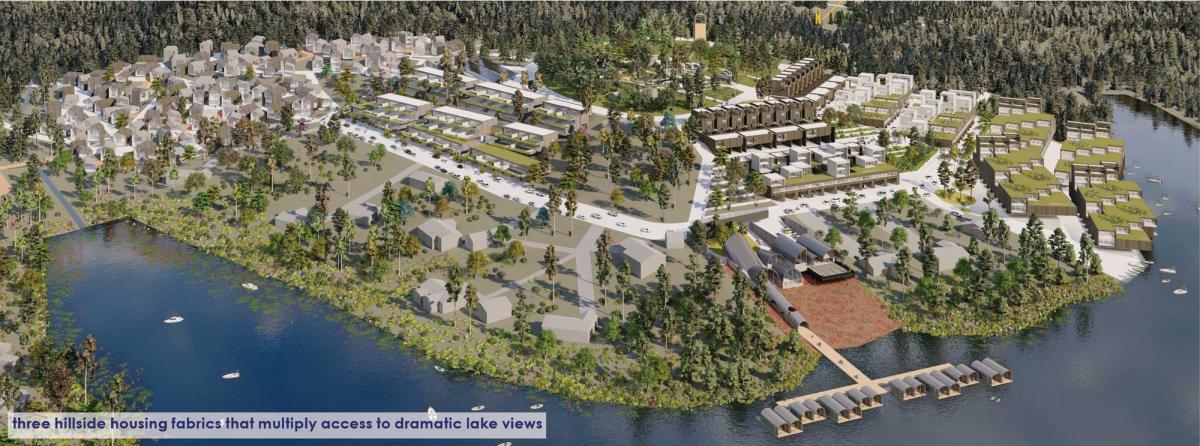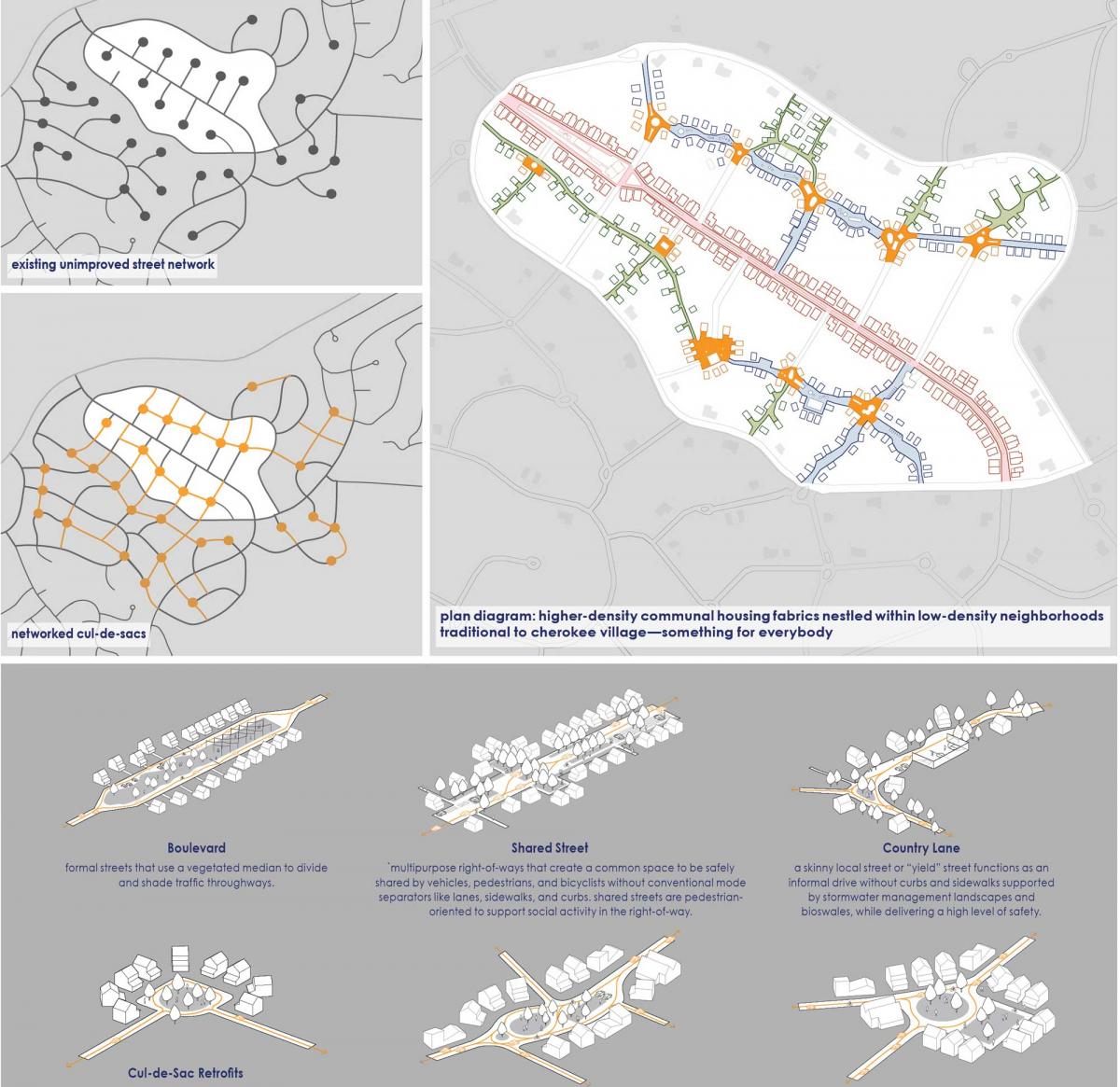
A vision for repairing rural sprawl
Cherokee Village is an odd and interesting community in the Ozarks of north Arkansas. In the 1950s, it was planned as a vast retirement community, platted for a population of 60,000. The road network, golf courses, and reservoirs for waterfront home sites were built, although most of the anticipated buyers never arrived.
Cherokee Village was incorporated as a city with a current population of 4,700 over 21 square miles. The occasional house dots miles of rural, narrow, paved roads. A few nodes of population and commercial activity have been created. With a National Endowment for the Arts grant, the City worked with the University of Arkansas Community Design Center to see how this automobile-oriented 1950s vision could be updated to accommodate richer, more varied living using urbanism principles.
The current pattern is called a “polycentric web,” although it is light on centers. It mostly features low-density single-family houses, accessible by automobile to a few commercial and civic nodes. The 2023 Framework Plan for Cherokee Village “reprograms this uniform polycentric cellular web through planning interventions that articulate identifiable place types using established pattern languages of good town form.”

The team identifies six urban interventions to “recalibrate automobile-oriented fabrics through fundamental principles of walkability, mixed-use planning, use of identifiable typologies in buildings, streets, and landscapes, human-centered scales of development, and strong social orientations.” These “acupunctural” urbanism ideas included:
- Restoring an existing commercial node on the east side of Cherokee Village.
- Creating a new village center on a lake.
- Building a Gateway Village at the southern entrance on US Route 412 including retail, compact housing, and public spaces.
- Designing an infill neighborhood on Lake Omaha, one of the reservoirs, connecting to a new village center.
- Placemaking scenarios could be introduced, including new street and neighborhood types. These scenarios include “higher-density communal housing fabrics nestled within low-density neighborhoods traditional to Cherokee Village.”
- The design team looked at how greenways could be added and strengthened to improve mobility throughout Cherokee Village.

The team envisions many new housing types in Cherokee Village, including “attached hillside terraced housing, pocket neighborhoods, missing middle housing, ADUs, RV parks, cottage communities in camp meeting configurations, long-stay hotels, and towers, all integrated into hospitality landscapes (think Chautauqua—the ultimate camp meeting community).”
The placemaking scenarios employ green streets, and the retrofit of existing cul-de-sac subdivisions with new street types (e.g., shared streets, country lanes, and introducing the cul-de-sac retrofit) premised on pedestrian connectivity. “They may be built around existing town and recreation centers, monetizing fabulous hillside views of lakes through new multifamily hillside housing.”

For this to happen, Cherokee Village must update its codes that primarily allow single-family housing. The Framework Plan for Cherokee Village is a suburban retrofit vision for a partly implemented retirement community with a seven-decade history as a low-density rural community, the brainchild of 20th Century developer John Cooper. The transformation will require the city to change its land use approach and invest in new ideas.
Although Cherokee Village is unusual, its urban patterns are not hard to find throughout the suburban and rural hinterland. I hope they give these ideas a try, and if so, Cherokee Village could be a model and a test case.




